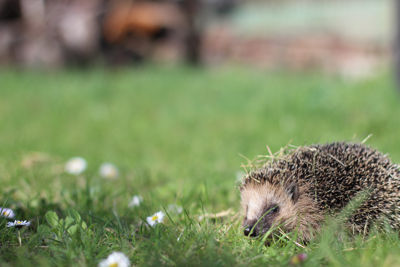 Igel im Gemeinschaftsgarten VAGaBUND
(Juliane Weicker)
Igel im Gemeinschaftsgarten VAGaBUND
(Juliane Weicker)
Easter is just around the corner and over the Easter weekend they will be flickering again: the Easter bonfires. What many people don't know is that Easter bonfires are dangerous for wild animals - especially hedgehogs! Hedgehogs hibernate in piles of twigs and leaves.
Why are hedgehogs so vulnerable to Easter fires? The reason lies in their nature: Hedgehogs do not fly. When they sense danger (crackling or the smell of fire) they instinctively curl up and wait - and die a painful death in the fire. The same goes for nocturnal mammals, ground-nesting birds and many insects, which are often unable to escape in time.
Burning for the Easter tradition?
Of course, no one has to do without the traditional fire at Easter. But you should be careful. This starts with gathering the materials for the fire. Keep an eye out for hedgehog nests and do not disturb hibernating animals. It is also a good idea to wait until the day of the fire to stack the wood. During the day it is already warm. But at night it is so cold that there is not enough food in the ground for insectivores like hedgehogs. Hedgehogs who are already awake often walk long distances at night to find food. They often do not return to their hibernation nest at sunrise, but spend the day looking for a new nest to sleep in. If the pile of wood for the Easter bonfire is built a few hours before it burns, the risk of a hedgehog hiding in it is greatly reduced.
If you are going to light a fire outside, you should also remember the following Only stack wood on the day of the fire - preferably a few hours before. An alternative is to carefully move the pile of leaves and brushwood on the day of the fire. Preparing the fire in a natural way is not only good for hedgehogs and other wildlife - it is also a great learning activity for children and enriches the Easter fire experience.